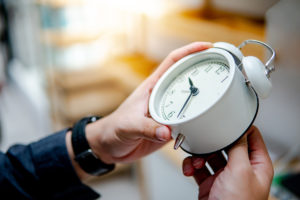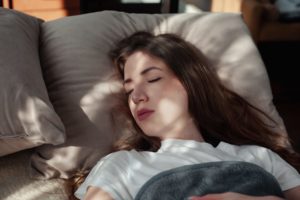What Is a Siesta?
- Siestas are short naps, often taken in the afternoon.
- Siestas are common in many cultures, promoting rest and productivity during the day.
- A short nap can boost alertness, mood, memory, and reduce stress.
- Keep siestas short, typically around 20 minutes, to avoid grogginess.
As many Americans shift to remote work, spending the afternoon at home has become more common. Instead of jumping right back into work after eating like you might’ve done when you worked in-person, remote workers have the opportunity to read a book or even take a nap after their meal.
Napping during a lunch break may be a new experience for many Americans. Resting during the midday is not a new practice to other areas in the world, however. While the exact date of the start of siestas is impossible to pinpoint, the practice likely goes back to the early Roman Empire, even though it is most commonly associated with Spain.
Origin of Siestas
Although it has been theorized that siestas date back to Ancient Rome, it more commonly is associated with Spain. Specifically after the Spanish Civil War, where it was very common for a worker to have more than one job to support his family.
Siesta means “sixth hour” and has been used to indicate the period of time in the day when shops in Spain and other hot climates would close for a few hours in the afternoon . This closing allowed for people to eat, rest, and escape the heat. The typical work day in Spain would span from 9 a.m. to 2 p.m. with a two hour break for the siesta, then work would resume from 4 p.m. to 8 p.m.
Benefits of the Siesta
The term siesta is also used casually to refer to an afternoon nap. There are many benefits to incorporating a siesta into your daily routine. Short naps may help you feel more rested and finish your work day strong.
Reduce Sleep Debt
Most adults need at least seven hours of sleep each night. However, activities such as work, commuting, and socializing have been shown to reduce the overall amount of time people spend asleep, resulting in a sleep debt.
Sleep debt is the difference between how much sleep a person needs and how much they actually receive. Napping is one way to reduce your sleep debt and its negative impacts. For example, a 10-minute power nap during the day may be enough to help you fight fatigue and sleepiness for up to two hours after your nap.
Improve Cognition and Performance
Sleep disruptions can directly impact overall health, affecting the ability to handle stress, diminishing cognition and memory , as well as increasing accidents at work and home. Naps have been shown to increase the brain’s ability to consolidate memories and regulate emotions more effectively . Naps can also boost your cognitive performance for up to a few hours after your nap.
These positive results from naps appear to be dependent on the length of the nap. Sticking to a nap duration of 10 to 30 minutes may be the best way to ensure you reap all the benefits of the nap. Naps lasting longer than 30 minutes are more likely to result in sleep inertia , which is the feeling of grogginess and delayed response time following a long nap. Sleep inertia goes away after a period of time, after which you are more likely to experience the improved performance from your nap.

Adverse Effects of Napping
While there is evidence to suggest that napping for short periods may help overall cognition and memory, this may not be true for all age groups. Longer habitual daytime naps are associated with an increase in inflammation among older adults. Middle aged women who take naps longer than an hour have an increased likelihood of having hypertension , whereas men do not.
There may also be a higher risk of experiencing a heart attack after long naps in people with a history of heart issues. This risk is due to a decline in blood pressure during naps that then increases rapidly once you wake, which may impact heart health in older populations. There is also evidence that naps in older populations can increase symptoms of depression .
If you have a history of heart issues or are an older adult, check with your doctor before adding an afternoon nap to your routine.
Tips for Taking a Siesta
Taking a siesta or a daily nap might be a beneficial way to add rest into your daily routine. If you’re looking to start taking lunchtime power naps, here are a few tips:
- Find a comfortable place to nap. While the couch might be more convenient, you may find that napping in bed is more comfortable and may help you fall asleep faster.
- Ensure you have an alarm clock set for about 20 minutes to reap the benefits of your nap without feeling groggy or drowsy.
- Set your bedroom temperature to a comfortable level a few hours before your nap.
- If you struggle with acid reflux or heartburn, try napping before your lunch instead of after.
- Find a relaxing guided meditation or music to help you fall asleep faster, especially if you’re not used to napping during the day.

Still have questions? Ask our community!
Join our Sleep Care Community — a trusted hub of sleep health professionals, product specialists, and people just like you. Whether you need expert sleep advice for your insomnia or you’re searching for the perfect mattress, we’ve got you covered. Get personalized guidance from the experts who know sleep best.
References
13 Sources
-
Merriam-Webster. (n.d.). Siesta. In Merriam-Webster.com dictionary.
https://www.merriam-webster.com/dictionary/siesta -
Jones, J. (2017, June 11). It’s time to put the tired Spanish siesta stereotype to bed. BBC Worklife.
https://www.bbc.com/worklife/article/20170609-its-time-to-put-the-tired-spanish-siesta-stereotype-to-bed -
Consensus Conference Panel, Watson, N. F., Badr, M. S., Belenky, G., Bliwise, D. L., Buxton, O. M., Buysse, D., Dinges, D. F., Gangwisch, J., Grandner, M. A., Kushida, C., Malhotra, R. K., Martin, J. L., Patel, S. R., Quan, S. F., Tasali, E., Non-Participating Observers, Twery, M., Croft, J. B., Maher, E., … Heald, J. L. (2015). Recommended amount of sleep for a healthy adult: A joint consensus statement of the American Academy of Sleep Medicine and Sleep Research Society. Journal of Clinical Sleep Medicine, 11(6), 591–592.
https://pubmed.ncbi.nlm.nih.gov/25979105/ -
Basner, M., Fomberstein, K. M., Razavi, F. M., Banks, S., William, J. H., Rosa, R. R., & Dinges, D. F. (2007). American time use survey: Sleep time and its relationship to waking activities. Sleep, 30(9), 1085–1095.
https://pubmed.ncbi.nlm.nih.gov/17910380/ -
Medic, G., Wille, M., & Hemels, M. E. (2017). Short- and long-term health consequences of sleep disruption. Nature and Science of Sleep, 9, 151–161.
https://pubmed.ncbi.nlm.nih.gov/28579842/ -
Watson, N. F., Badr, M. S., Belenky, G., Bliwise, D. L., Buxton, O. M., Buysse, D., Dinges, D. F., Gangwisch, J., Grandner, M. A., Kushida, C., Malhotra, R. K., Martin, J. L., Patel, S. R., Quan, S. F., & Tasali, E. (2015). Recommended Amount of Sleep for a Healthy Adult: A Joint Consensus Statement of the American Academy of Sleep Medicine and Sleep Research Society. Sleep, 38(6), 843–844.
https://aasm.org/resources/pdf/pressroom/adult-sleep-duration-consensus.pdf -
Mantua, J., & Spencer, R. (2017). Exploring the nap paradox: Are mid-day sleep bouts a friend or foe? Sleep Medicine, 37, 88–97.
https://pubmed.ncbi.nlm.nih.gov/28899546/ -
Tietzel, A. J., & Lack, L. C. (2001). The short-term benefits of brief and long naps following nocturnal sleep restriction. Sleep, 24(3), 293–300.
https://pubmed.ncbi.nlm.nih.gov/11322712/ -
Hilditch, C. J., Centofanti, S. A., Dorrian, J., & Banks, S. (2016). A 30-minute, but not a 10-minute nighttime nap is associated with sleep inertia. Sleep, 39(3), 675–685.
https://pubmed.ncbi.nlm.nih.gov/26715234/ -
Qu, H., Wang, H., Deng, M., Wei, H., & Deng, H. (2014). Associations between longer habitual day napping and non-alcoholic fatty liver disease in an elderly Chinese population. PloS One, 9(8), e105583.
https://pubmed.ncbi.nlm.nih.gov/25140521/ -
Yang, Y., Liu, W., Ji, X., Ma, C., Wang, X., Li, K., & Li, J. (2020). Extended afternoon naps are associated with hypertension in women but not in men. Heart & Lung: The Journal of Critical Care, 49(1), 2–9.
https://pubmed.ncbi.nlm.nih.gov/31521340/ -
Bursztyn, M., Ginsberg, G., Hammerman-Rozenberg, R., & Stessman, J. (1999). The siesta in the elderly: Risk factor for mortality? Archives of Internal Medicine, 159(14), 1582–1586.
https://pubmed.ncbi.nlm.nih.gov/10421281/ -
Cross, N., Terpening, Z., Rogers, N. L., Duffy, S. L., Hickie, I. B., Lewis, S. J., & Naismith, S. L. (2015). Napping in older people ‘at risk’ of dementia: Relationships with depression, cognition, medical burden and sleep quality. Journal of Sleep Research, 24(5), 494–502.
https://pubmed.ncbi.nlm.nih.gov/26096839/

















